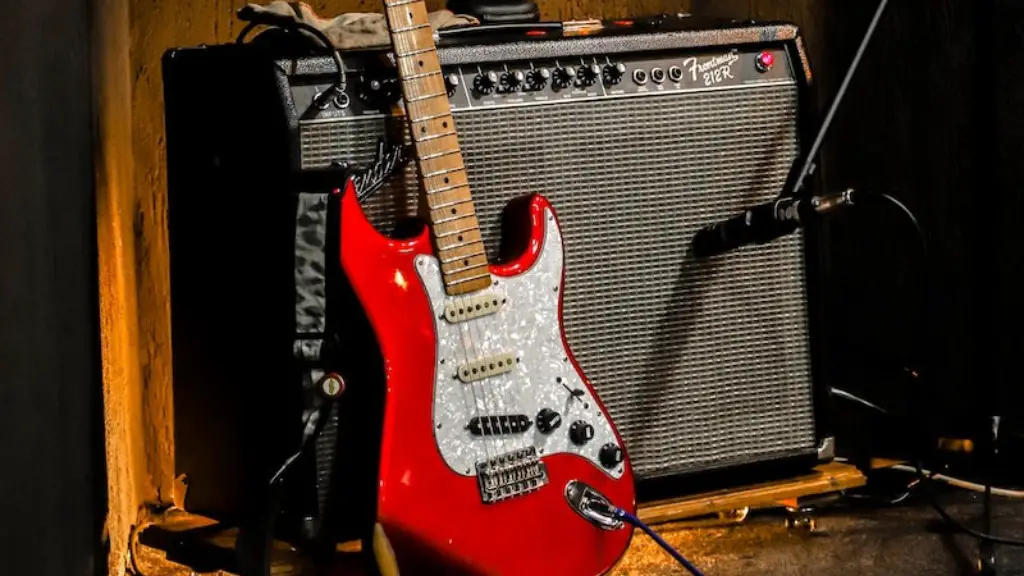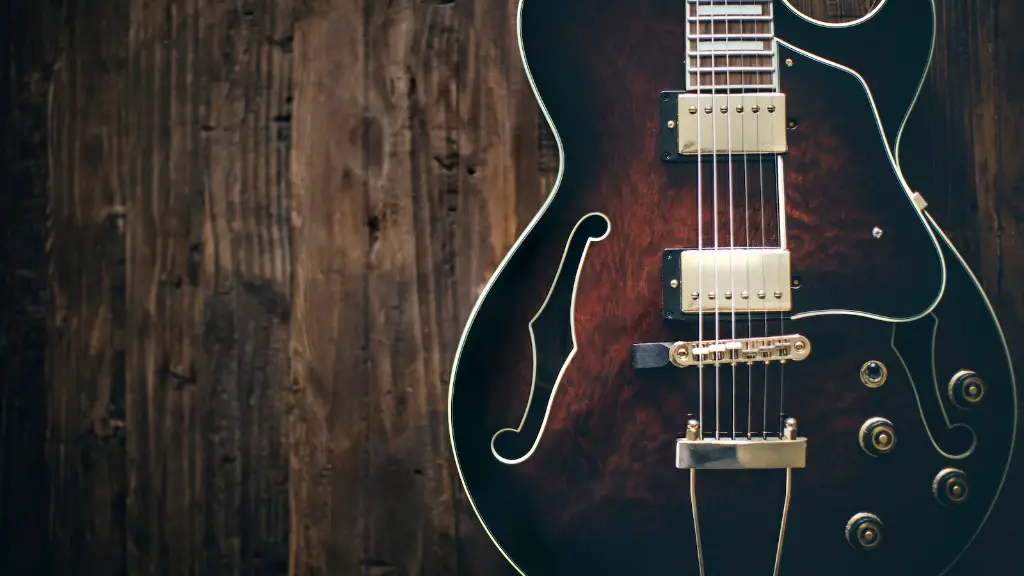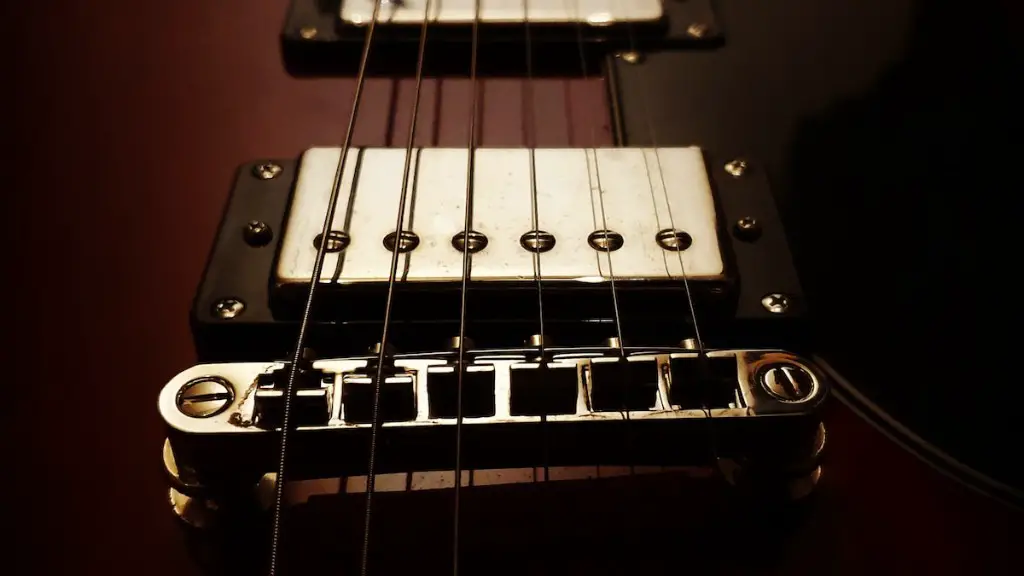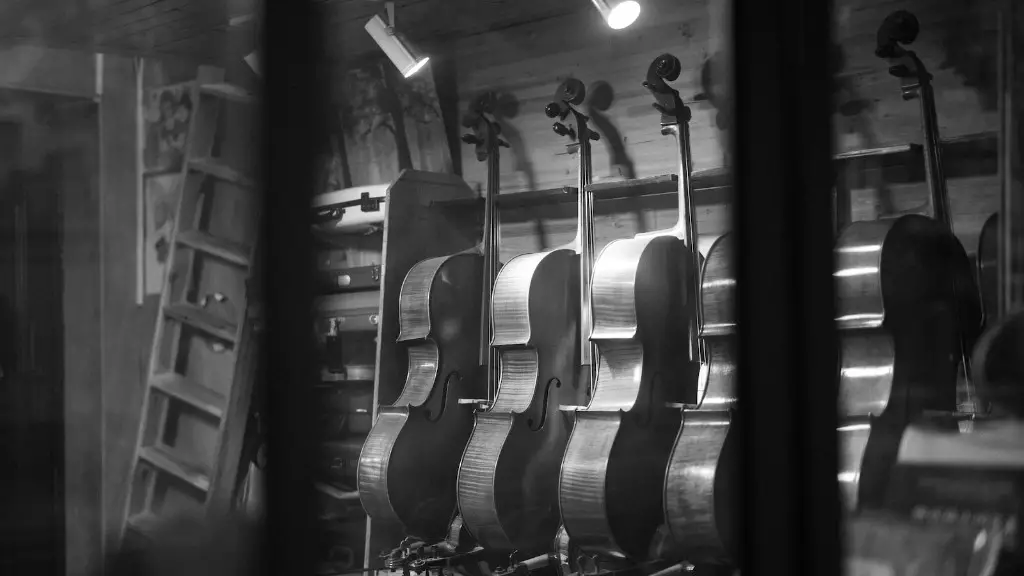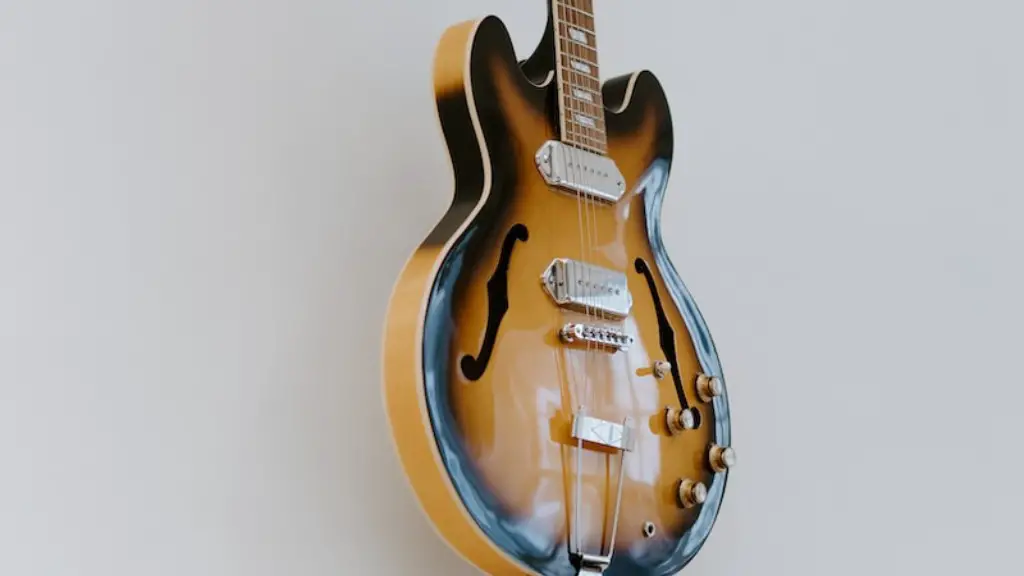String height is an important factor in setting up an electric guitar. It affects the instrument’s playability, sound, and overall feel. Proper string height ensures the guitar can be played comfortably and with ease.
The ideal string height for an electric guitar depends on several factors, such as the player’s style and preference. Generally speaking, the strings should be set at a height that allows for easy fretting without any buzzing or rattling. This will vary from one player to another, but it is generally recommended to start with a medium-low height and then adjust depending on the player’s needs.
It is important to note that string height does not necessarily have to be uniform across all strings. Different guitars may require different heights in order to achieve optimal playability. Additionally, adjusting string height can also affect intonation and tuning stability, so it is important to be careful when making adjustments.
Overall, finding the proper string height for an electric guitar requires some trial and error but can result in a much better playing experience overall.
Ideal Action on an Electric Guitar
The ideal action on an electric guitar is the height of the strings from the fretboard. It should be low enough that your fingers are able to press down chords and notes comfortably, yet high enough that it does not buzz or rattle when strummed. It’s all about finding a balance between playability and sound quality. A guitar set-up by a professional technician is recommended as they are experienced in determining the correct height for each string.
For those looking to adjust their guitar’s action themselves, a good starting point is to tune your guitar and check the action at the 12th fret. If it’s too high, you will need to lower the bridge saddle or nut until it’s just right. The lower the action,
the easier it is to play. However, if it’s too low, you may experience unwanted buzzing or rattling of certain strings when playing chords. Adjusting your guitar’s action can take some time, but with patience and practice you can achieve a comfortable level for playing your electric guitar.
Adjusting the Action on an Electric Guitar
Adjusting the action on an electric guitar requires some basic tools and a little bit of know-how. The action is the distance between the strings and the fretboard, and it affects how easy or hard it is to play. If your guitar’s action is too high, you’ll find it difficult to press down on the strings. Fortunately, it’s relatively easy to lower your guitar’s action. You’ll need a small Phillips head screwdriver, an Allen key wrench, and an adjustable truss rod wrench.
Start by loosening the strings and then adjusting the truss rod with your truss rod wrench. Loosen it slightly until you feel a slight give in the neck. Then use your Phillips head screwdriver to adjust the saddle height on each string. Raise or lower them as needed until they are level with one another. Finally, use your Allen key wrench to adjust the bridge height screws until they match up with the saddle height screws.
Once you’ve adjusted all of these components, you should be able to play comfortably again and experience improved sound quality from your instrument. Be sure to check and adjust any time you change strings or notice a change in sound quality or playability of your guitar.
Measuring String Height on an Electric Guitar
Measuring the string height on an electric guitar is an important step in setting up the instrument and maintaining its playability. The height of the strings affects both the ease of playing and the sound quality of the guitar. Adjusting the string height is not difficult to do, as long as you have the right tools and a little bit of patience.
The first step is to check your guitar’s neck relief. This is done by placing a straight edge across your fretboard, then measuring from the bottom of each fret to the top of the straight edge. If there is too much relief, you will need to adjust your truss rod before proceeding.
Next, use a feeler gauge to measure the distance between each string and its corresponding fret at various points along the neck. Your goal should be for no more than 0.010” clearance on either side of each string at its 12th fret, with slightly less clearance for heavier strings; lighter strings may require up to 0.012” clearance.
Once you know what adjustments need to be made, use either a nut file or an adjustable wrench or Allen key to adjust your bridge saddles accordingly. Make small changes in increments until you achieve your desired string height at both ends of the fretboard.
Finally, check your tuning after making adjustments and make any necessary tweaks until it’s perfect. With a little bit of practice and patience, adjusting your electric guitar’s string height
Troubleshooting High or Low Action on an Electric Guitar
Having trouble with your electric guitar’s action? Whether it’s too high or too low, the solution is simple. First, adjust the truss rod. The truss rod is a metal rod inside the neck of the guitar that controls the amount of curvature in the neck. If your action is too high, turn the truss rod counter-clockwise to reduce the amount of curvature and lower your strings. If your action is too low, turn it clockwise to increase curvature and raise your strings.
Next, check and adjust your bridge saddles. The bridge saddles are located at either end of the bridge and control how far away from the fretboard each string sits. If you need to raise your strings (to fix low action), you can move each saddle back a little bit; if you need to lower them (to fix high action), move each saddle forward a little bit. Make sure you turn all of them by an equal amount so that all strings remain in tune with each other. Finally, check your intonation by playing an open string and then playing it at different frets – if they don’t sound exactly the same pitch, you may need to adjust your intonation screws on the bridge plate. With these steps, you should be able to get just the right amount of action on your electric guitar!
Benefits of Setting Proper String Height on an Electric Guitar
Setting the proper string height on an electric guitar is essential for the guitar to play and sound its best. It can also help reduce fatigue and strain on the hands, making playing more enjoyable. Proper string height also helps with intonation, ensuring that notes are properly tuned. This helps make sure you are playing in tune with all other instruments. It also allows for expressive vibrato and bending techniques, which will sound better when strings are set at the correct height. Setting the strings too low can cause buzzing and make it more difficult to play, whereas setting them too high can make it hard to press down on the strings. Having proper string height gives you a better overall playing experience, so it’s important to take the time to set it up properly.
If your guitar is not set up correctly, it can cause damage over time. Overly high or low string heights can put unnecessary stress on your neck, bridge, and nut. This could lead to problems such as intonation issues or even worse – damage to your instrument that could cost you money in repairs. Taking some time to set up your electric guitar properly will ensure that you get a great playing experience and that your guitar stays in top shape for years to come.
Final Words
In conclusion, the proper string height for an electric guitar depends on the preference of the musician. It is important to keep in mind that the lower action settings can cause fret buzzing while higher action settings can cause fatigue. We also discussed the importance of intonation and how it should be checked when adjusting the string height. The right action setting will help you get the best sound out of your guitar. Finding this sweet spot can take some experimentation, but is well worth it in the end.
